
Dish, Henry Piercy, Alexandria, ca. 1792–1796. Slipware. D. 10". (All objects courtesy Alexandria Archaeology unless otherwise noted; photos by Gavin Ashworth unless otherwise noted.)
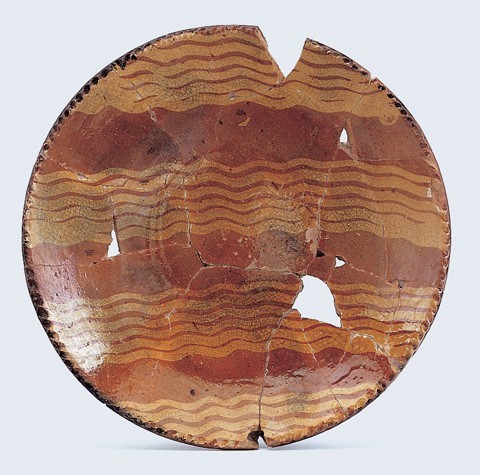
Dish, Topham/Miller Pottery, Philadelphia, ca. 1795–1815. Slipware. D. 13 1/2". (Courtesy, Dr. Richard J. Dent, Department of Anthropology, American University.)
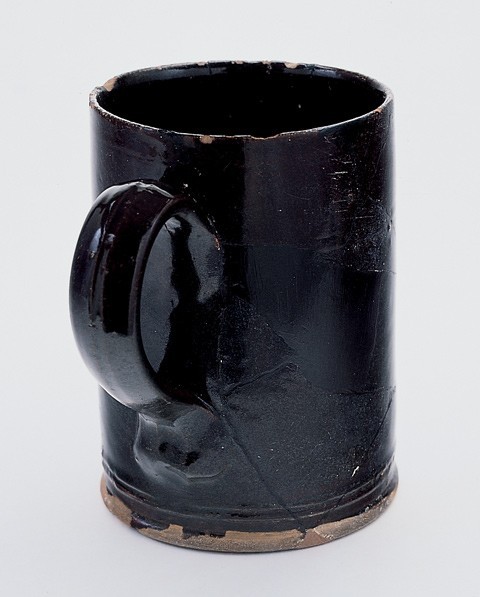
Tankard, Henry Piercy, Alexandria, ca. 1792–1795. Lead-glazed earthenware. H. 6 1/4".
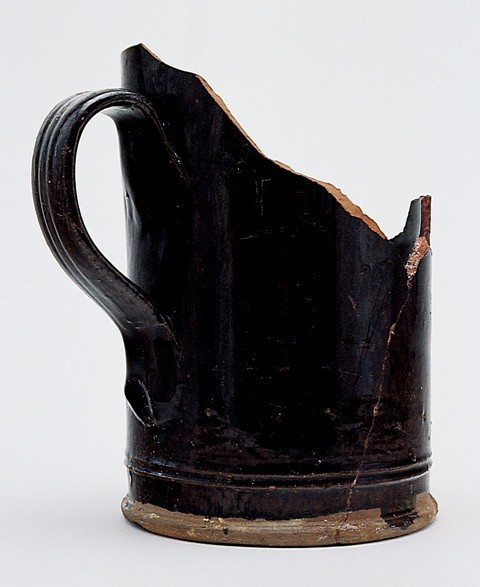
Tankard, Philadelphia, ca. 1770s. Lead-glazed earthenware. H. 6 1/4". (Courtesy, National Park Service, Independence National Historical Park, Inde-57732.)
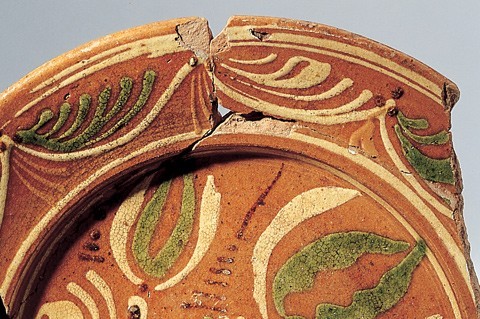
Dish, Philadelphia, ca. 1769. Slipware. D. 9". (Courtesy, National Park Service, Independence National Historical Park, Franklin Court V-627.) This Moravian-style vessel, with a multicolored slip-trailed tulip design, shows a strong Germanic influence.
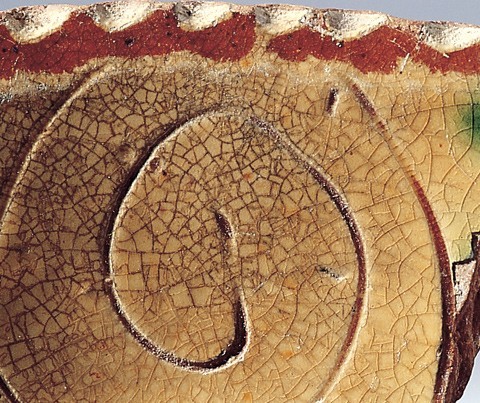
Dish, Philadelphia, ca. 1769. Slipware. D. 8 3/4". (Courtesy, National Park Service, Independence National Historical Park, Inde-24523.) The sgrafitto technique of scratching a design through a layer of slip was commonly used in England.
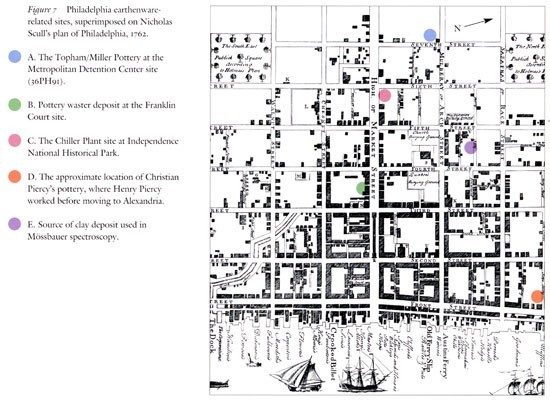
Philadelphia earthenware- related sites, superimposed on nicholas Scull's plan of Philadelphia, 1762.
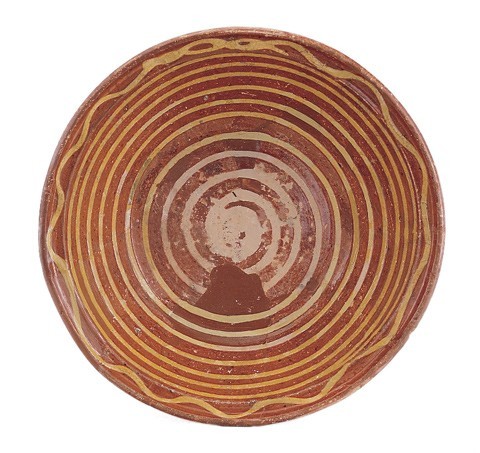
Pans, Henry Piercy, Alexandria, ca. 1792–1796. Slipware. D. 11 3/4", 12 1/2" and 12 3/4". These vessels were found in a privy behind a china and glass shop that Henry Piercy owned from 1795 to 1796.
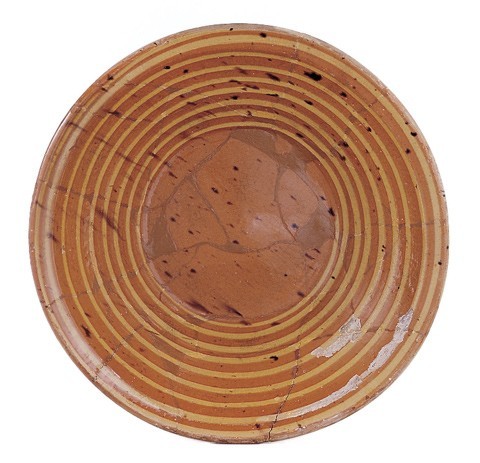
Pans, Henry Piercy, Alexandria, ca. 1792–1796. Slipware. D. 11 3/4", 12 1/2" and 12 3/4". These vessels were found in a privy behind a china and glass shop that Henry Piercy owned from 1795 to 1796.
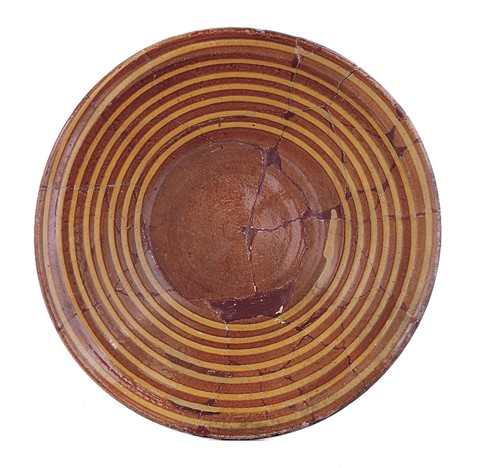
Pans, Henry Piercy, Alexandria, ca. 1792–1796. Slipware. D. 11 3/4", 12 1/2" and 12 3/4". These vessels were found in a privy behind a china and glass shop that Henry Piercy owned from 1795 to 1796.
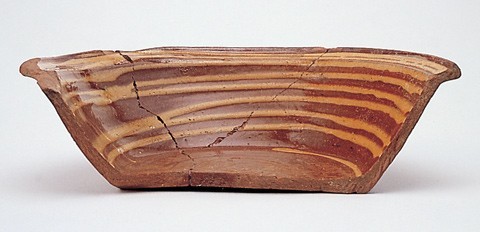
Pans, Philadelphia, ca. 1770–1815. Slipware. D. 11 3/4", 9", 7 3/4" (Courtesy, National Park Service, Independence National Historical Park, Inde-23683, Inde-57278; and Dr. Richard J. Dent, Department of Anthropology, American University.)

Pans, Philadelphia, ca. 1770–1815. Slipware. D. 11 3/4", 9", 7 3/4" (Courtesy, National Park Service, Independence National Historical Park, Inde-23683, Inde-57278; and Dr. Richard J. Dent, Department of Anthropology, American University.)
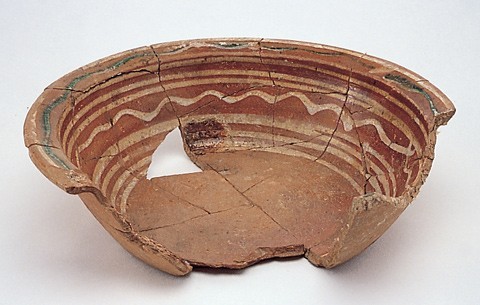
Pans, Philadelphia, ca. 1770–1815. Slipware. D. 11 3/4", 9", 7 3/4" (Courtesy, National Park Service, Independence National Historical Park, Inde-23683, Inde-57278; and Dr. Richard J. Dent, Department of Anthropology, American University.)
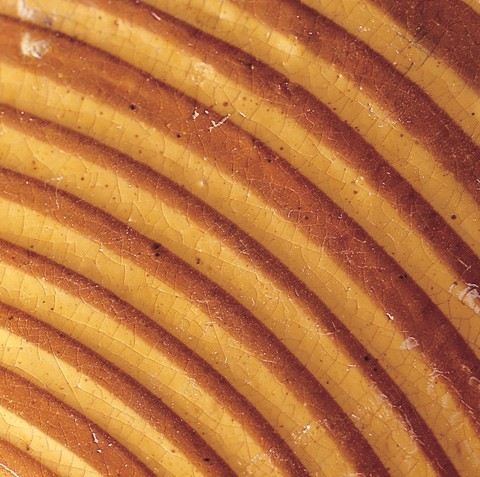
Detail of pans showing slip-trailed spiral decoration. (Courtesy, Alexandria Archaeology; and National Park Service, Independence National Historical Park, Inde-57278.) The example on the left, from the Piercy kiln site, shows the even, finely executed spirals found on Alexandria slipware. The example on the right is from Philadelphia, ca. 1770s.
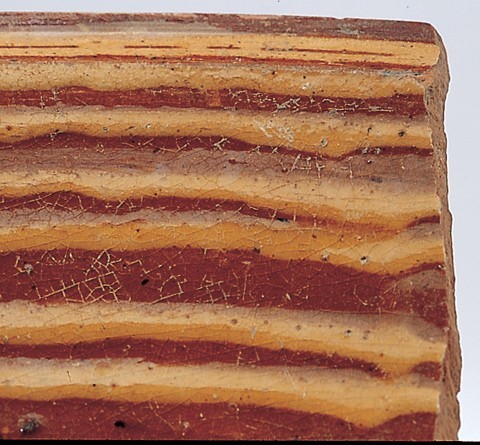
Detail of pans showing slip-trailed spiral decoration. (Courtesy, Alexandria Archaeology; and National Park Service, Independence National Historical Park, Inde-57278.) The example on the left, from the Piercy kiln site, shows the even, finely executed spirals found on Alexandria slipware. The example on the right is from Philadelphia, ca. 1770s.
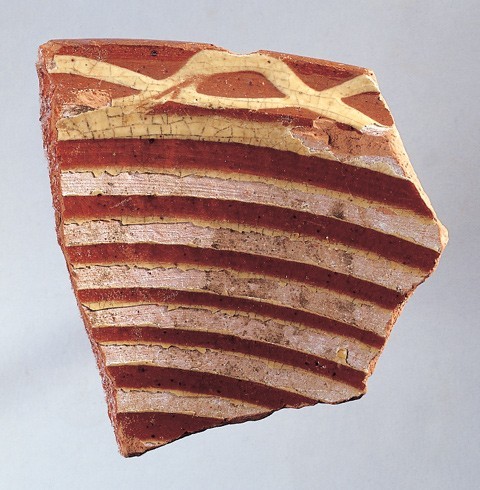
Pan fragment, Henry Piercy, Alexandria, 1792–1809. Slipware. This rim from the Piercy waster dump is embellished with a chain pattern made of two intersecting lines of slip. A plain line or single wavy line is more common.
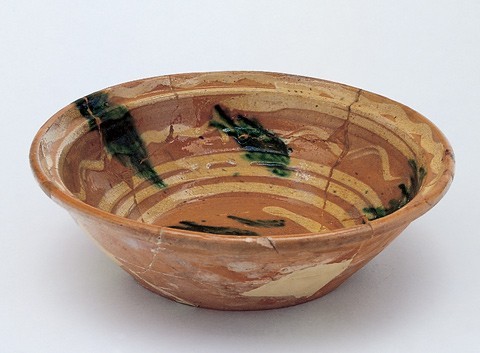
Pan, Alexandria, ca. 1792– 1809. D. 10 1/4". Slipware with green copper-oxide splotches.
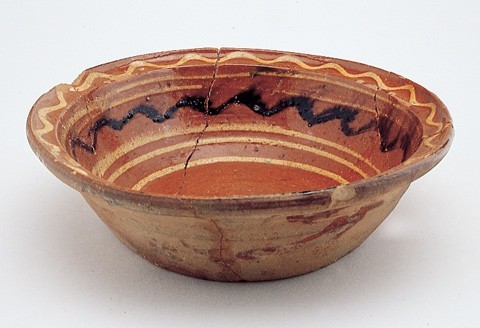
Pan, Philadelphia, ca. 1770s. Slipware with black and yellow trailed slip. D. 8 1/2". (Courtesy, National Park Service, Independence National Historical Park, Inde-57209.) Similar black slip is used by Shenandoah Valley potters, but not in Alexandria.
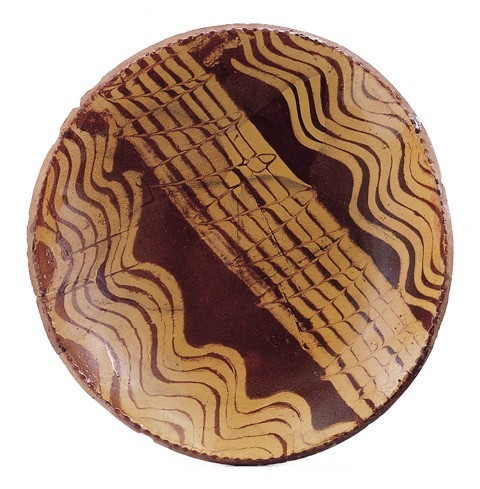
Chargers, Henry Piercy, Alexandria, ca. 1792–1796. Slipware. D. 13", 12 1/2", 13". These large dishes were among more than eighty of Piercy’s manufacture that were found in a privy behind his King Street retail shop, occupied for only six months from 1795 to 1796.
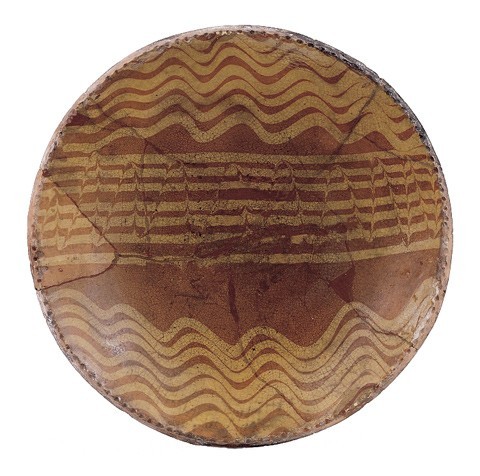
Chargers, Henry Piercy, Alexandria, ca. 1792–1796. Slipware. D. 13", 12 1/2", 13". These large dishes were among more than eighty of Piercy’s manufacture that were found in a privy behind his King Street retail shop, occupied for only six months from 1795 to 1796.
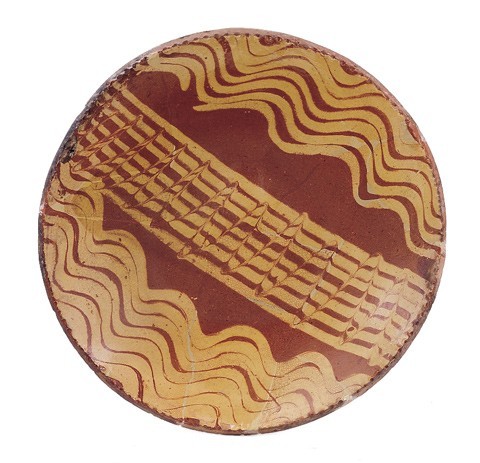
Chargers, Henry Piercy, Alexandria, ca. 1792–1796. Slipware. D. 13", 12 1/2", 13". These large dishes were among more than eighty of Piercy’s manufacture that were found in a privy behind his King Street retail shop, occupied for only six months from 1795 to 1796.
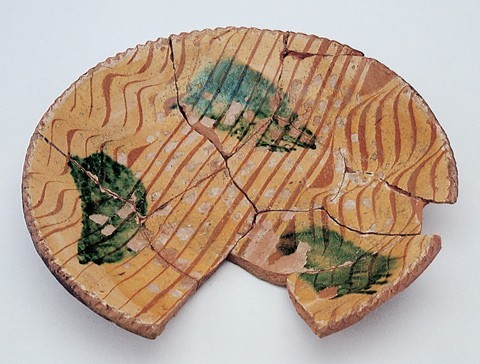
Chargers, Philadelphia, ca. 1770s. Slipware with green copper-oxide daubings. D. 11 3/4" and 9 1/2". (Courtesy, National Park Service, Independence National Historical Park, Inde-57214 and Franklin Court V-279.)
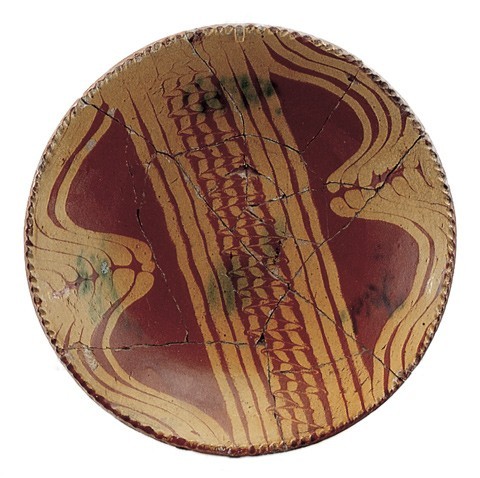
Chargers, Philadelphia, ca. 1770s. Slipware with green copper-oxide daubings. D. 11 3/4" and 9 1/2". (Courtesy, National Park Service, Independence National Historical Park, Inde-57214 and Franklin Court V-279.)
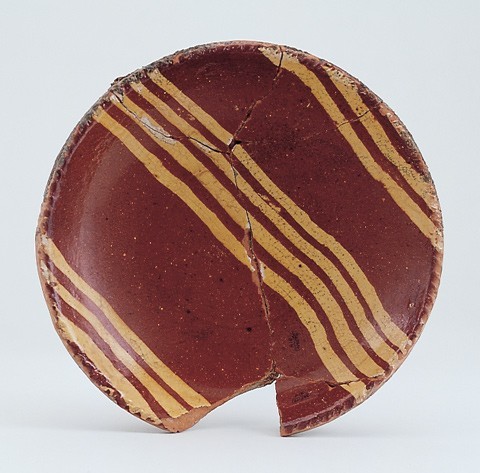
Dish, Topham/Miller Pottery, Philadelphia, ca. 1795–1815. Slipware. D. 7 1/2". (Courtesy Dr. Richard J. Dent, Department of Anthropology, American University.) A faint circle from the drape mold can be seen in the center.
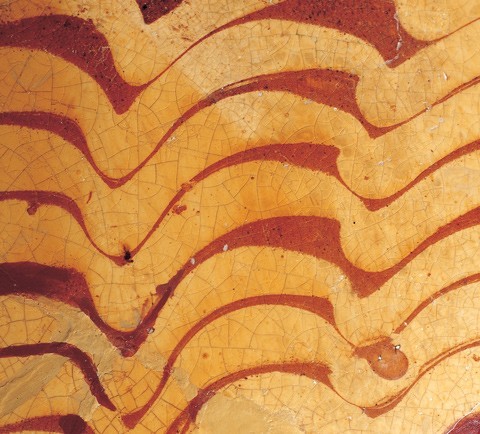
Detail of a dish, Henry Piercy, Alexandria, 1792–1796. This dish clearly shows the use of a multiple-spouted slip cup.
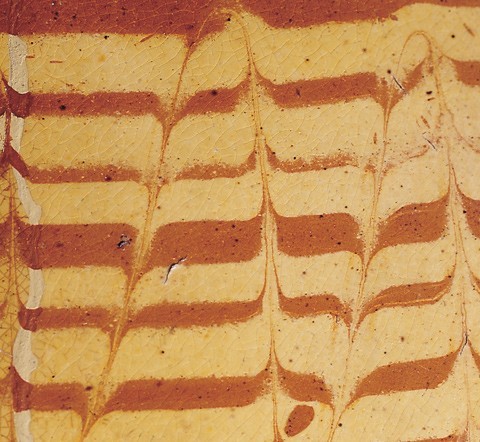
Detail of the combed slip on a dish from the Henry Piercy site, Alexandria, 1792–1796.

Dish fragment, Henry Piercy, Alexandria, 1792–1809. Slipware. This sherd from the Piercy kiln site is decorated with combed slip and copper-oxide splotches.

Dish, Henry Piercy, Alexandria, 1792–1796. Slipware. D. 10".

Detail of the dish illustrated in fig. 20, showing a repair made at the time of manufacture. Small areas of slip were damaged when the dish was removed from the drape mold. Repairs were made using mismatched fragments of slip decoration, which may have been trimmed from the edge of the dish.

Bowls, Henry Piercy, Alexandria, ca. 1792–1796. Slipware. D. 5 1/2", 6", 5". Note the variation in slip decoration.
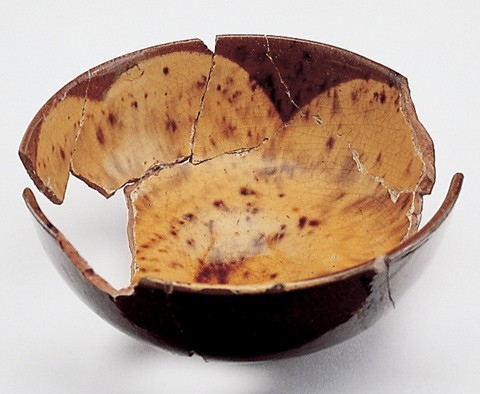
Bowls, Philadelphia, ca. 1770–1815. Slipware. D. 6 1/4", 5 1/4", 6". (Courtesy National Park Service, Independence National Historical Park, Inde-54233 and Inde-60183; and Dr. Richard J. Dent, Department of Anthropology, American University.) The application of the slip in lobes, or “petals,” can be clearly seen on the example from Franklin Court (left).

Bowls, Philadelphia, ca. 1770–1815. Slipware. D. 6 1/4", 5 1/4", 6". (Courtesy National Park Service, Independence National Historical Park, Inde-54233 and Inde-60183; and Dr. Richard J. Dent, Department of Anthropology, American University.) The application of the slip in lobes, or “petals,” can be clearly seen on the example from Franklin Court (left).
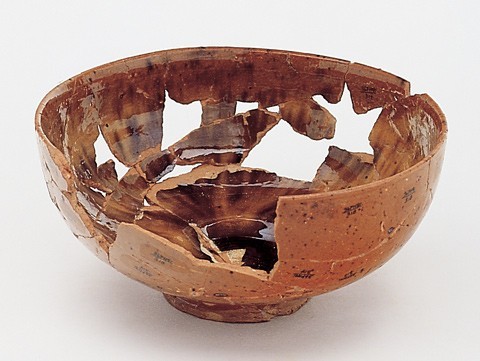
Bowls, Philadelphia, ca. 1770–1815. Slipware. D. 6 1/4", 5 1/4", 6". (Courtesy National Park Service, Independence National Historical Park, Inde-54233 and Inde-60183; and Dr. Richard J. Dent, Department of Anthropology, American University.) The application of the slip in lobes, or “petals,” can be clearly seen on the example from Franklin Court (left).
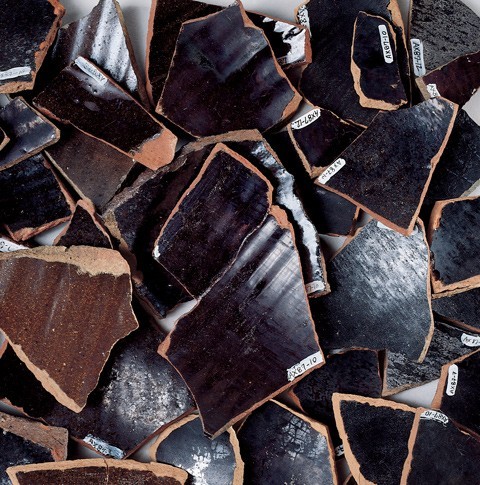
Sherds of narrow-mouthed vessels, Henry Piercy, Alexandria, ca. 1792–1809. Lead-glazed earthenware. Wheel marks seen on the interior surface indicate that these sherds, from the Piercy kiln site, come from narrow-mouthed vessels such as jugs and pitchers. The potter smoothed the interior of wide-mouthed bowls, porringers, and chamber pots.
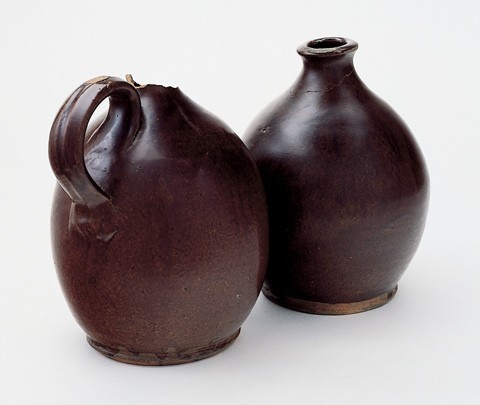
Syrup jugs, Henry Piercy, Alexandria, ca. 1792–1796. Lead-glazed earthenware. H. 7". These examples are from the site of Piercy’s shop.
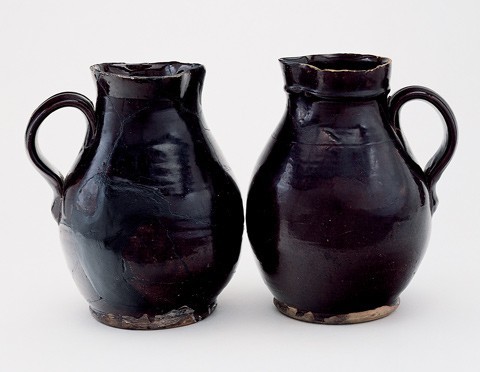
Pitchers, Henry Piercy, Alexandria, ca. 1792–1796. Lead-glazed earthenware. H. 9". Both styles are also found in Philadelphia. These examples are also from the site of Piercy’s shop.

Chamber pot, Henry Piercy, Alexandria, ca. 1792–1796. Lead-glazed earthenware. D. 7 1/2".
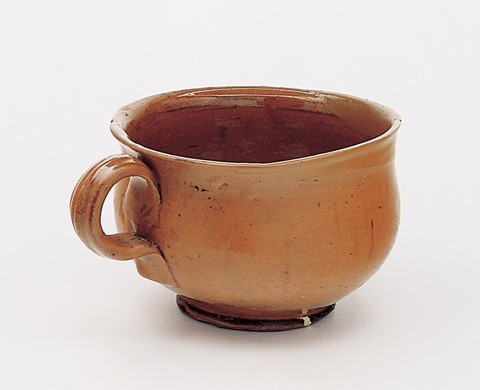
Porringer, Henry Piercy, Alexandria, ca. 1792–1796. Lead-glazed earthenware. D. 5 1/2".
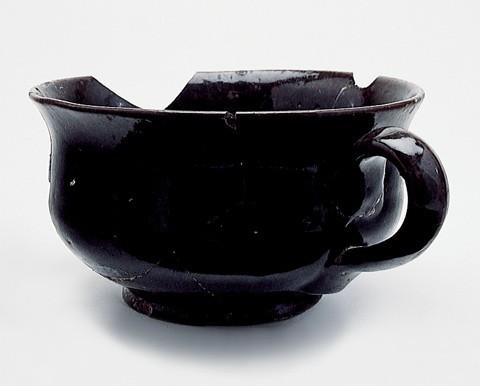
Porringer, Philadelphia, ca. 1769. Lead-glazed earthenware. D. 5 1/2". (Courtesy, National Park Service, Independence National Historical Park, Inde-23705.)
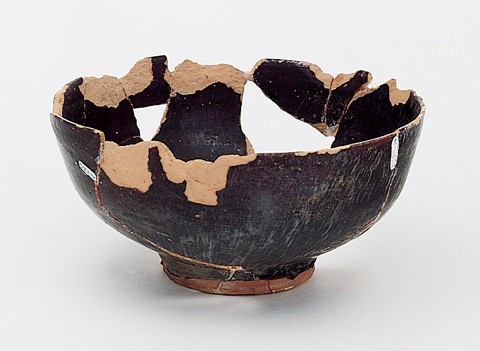
Bowl, Henry Piercy, ca. 1792– 1809. Lead-glazed earthenware. D. 6 1/2". This black-glazed bowl is from the Piercy kiln site.
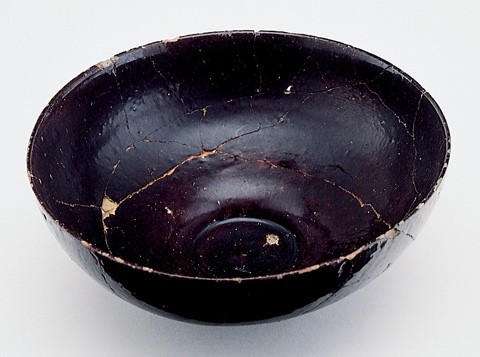
Bowl, Philadelphia, ca. 1770s. Lead-glazed earthenware. D. 8". (Courtesy, National Park Service, Independence National Historical Park, Inde-59910.) Note the well formed by shaping the footring.
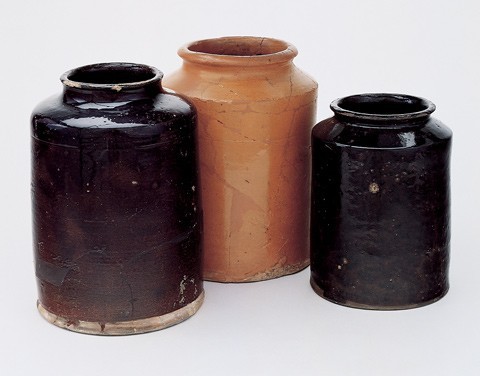
Jars, Alexandria, ca. 1792– 1809. Lead-glazed earthenware. H. 8 1/2", 8 1/2", 7".
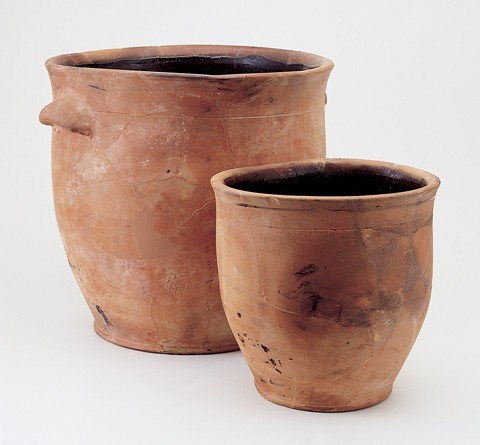
Utilitarian pots, Henry Piercy, Alexandria, ca. 1792–1796. Lead-glazed earthenware. H. 13", 9". The largest pots have lug handles.
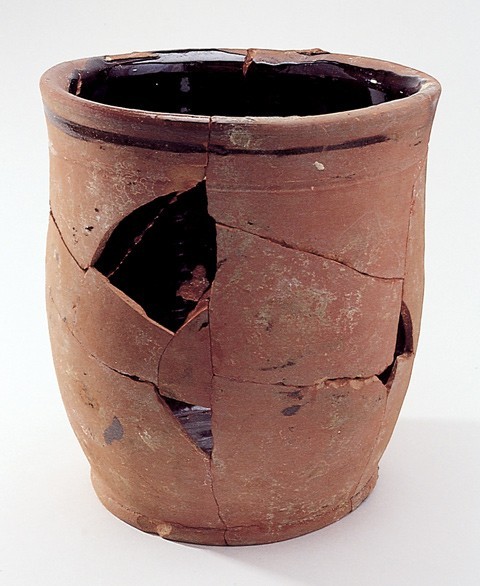
Utilitarian pot, Philadelphia, ca. 1770s. Lead-glazed earthenware. H. 10". (Courtesy, National Park Service, Independence National Historical Park, Inde-57294.)
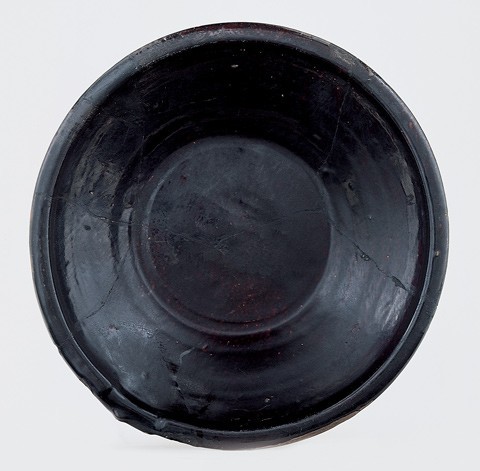
Milk pan, Henry Piercy, Alexandria, ca. 1792–1809. Lead-glazed earthenware. D. 11". Milk pans are glazed on the inside of the vessel and have a pouring spout, seen at lower left. They range in size from 10" to 15 1/2" in diameter. Most are shallow like this example, but a few have steeper sides.
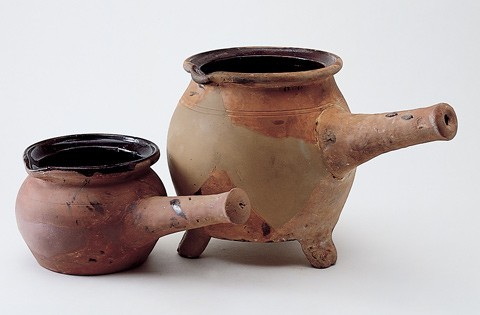
Pipkins, Henry Piercy, Alexandria, ca. 1792– 1809. Lead-glazed earthenware. H. 5", 8 1/2". The small pipkin on the left, from Piercy’s shop, has a flat bottom. An example from a privy on Market Square has tripod feet to raise it above the hot ashes on the hearth.

Flowerpot fragment, Henry Piercy, Alexandria, ca. 1792–1809. Unglazed earthenware. D. 10". This sherd from the Piercy kiln site displays a piecrust flange. Some Alexandria flowerpots also have a piecrust rim and wavy combed lines on the body.
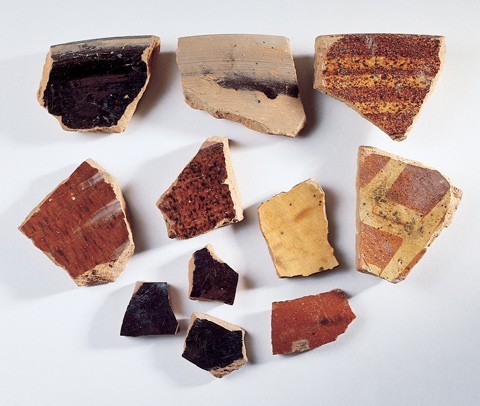
Detail of the piecrust flange of a flowerpot, Philadelphia, ca. 1769. (Courtesy, National Park Service, Independence National Historical Park, Inde-24490.)

Waster sherds attributed to Daniel Topham, Philadelphia, 1766–1783, recovered from the rear of 711 and 712 Arch Street (Block 2 of the Metropolitan Detention Center site in Philadelphia). (Courtesy, Dr. Richard J. Dent, Department of Anthropology, American University.) Included are fragments of utilitarian pots; a slipware pan, dish, and bowl; and black-glazed vessels.
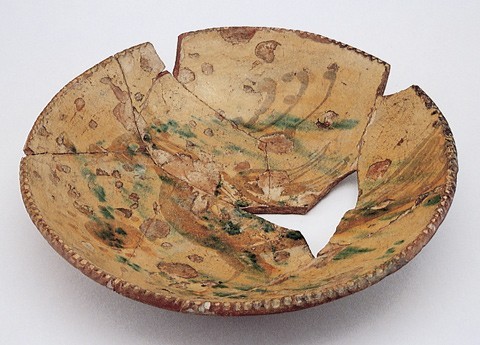
Dish, Philadelphia, ca. 1769. Slipware. D. 11 3/4". (Courtesy, National Park Service, Independence National Historical Park, Inde-24234.) This vessel from Franklin Court has a bird motif.
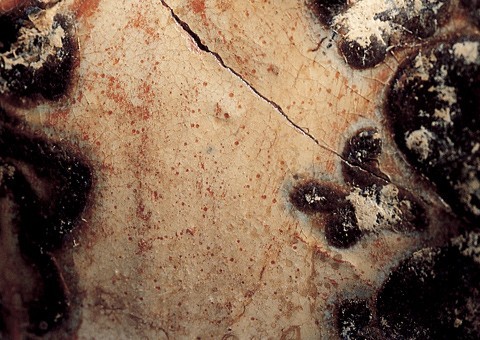
Detail of a hollow ware vessel, Philadelphia, ca. 1769. Slipware. (Courtesy, National Park Service, Independence National Historical Park, Inde-23688.) This vessel from Franklin Court has black on white slip decoration on the exterior.
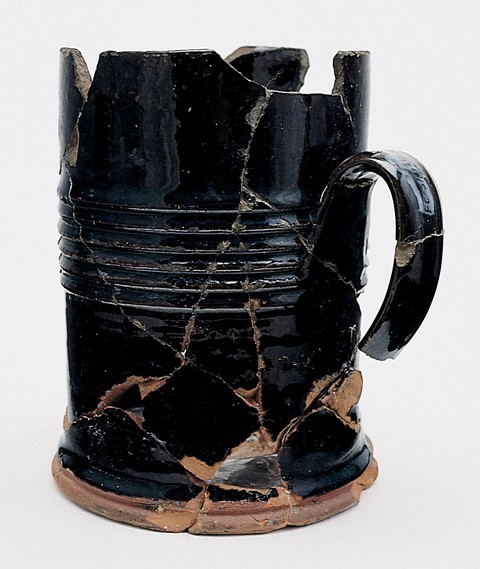
Tankard, Philadelphia, ca. 1769. Lead-glazed earthenware. H. 4 3/4". (Courtesy, National Park Service, Independence National Historical Park, Inde-23646.) This vessel from Franklin Court has a ribbed midsection reminiscent of Buckley ware.
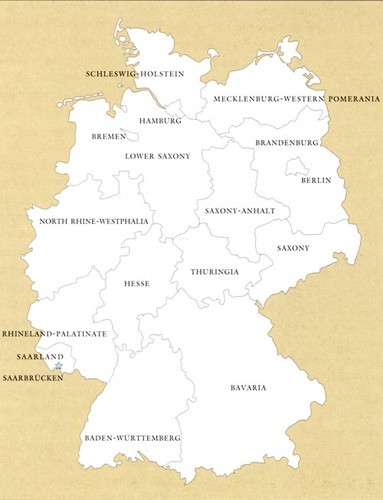
Piercy’s homeland in Saarbrücken, Germany, was a major center of earthenware production. (Artwork by Nichole Drgan and Wynne Patterson.)
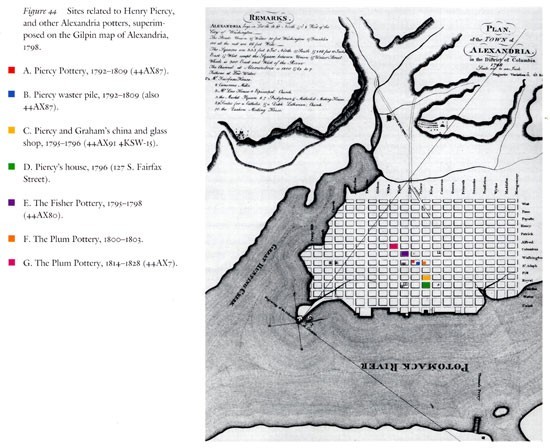
Sites related to Henry Piercy, and other Alexandria potters, superimposed on the Gilpin map of Alexandria, 1798.
A. Piercy Pottery, 1792–1809 (44AX87).
B. Piercy waster pile, 1792–1809 (also 44AX87).
C. Piercy and Graham’s china and glass shop, 1795–1796 (44AX91 4KSW-15).
D. Piercy’s house, 1796 (127 S. Fairfax Street).
E. The Fisher Pottery, 1795–1798 (44AX80).
F. The Plum Pottery, 1800–1803.
G. The Plum Pottery, 1814–1828 (44AX7).
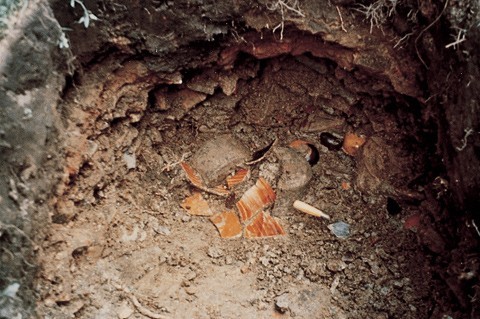
Test excavation at the Piercy Pottery site (44AX87), 1968. (Photo, Richard Muzzrole, Smithsonian Institution.) Note fragments of slipware pans and bowls and black-glazed bowls.
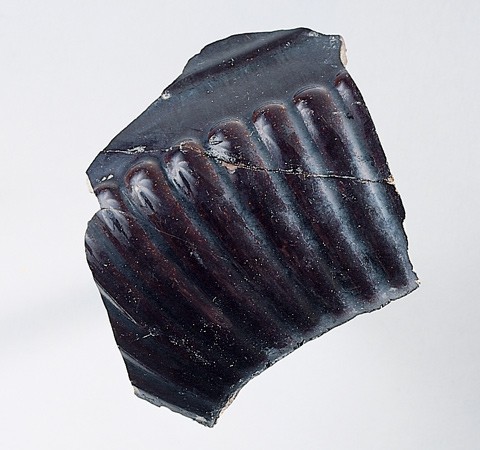
Teapot fragment, Thomas Fisher, Alexandria, ca. 1795–1798. Lead-glazed earthenware. These sherds from the Fisher site have glaze on a broken edge, an indication that the pot broke in firing.
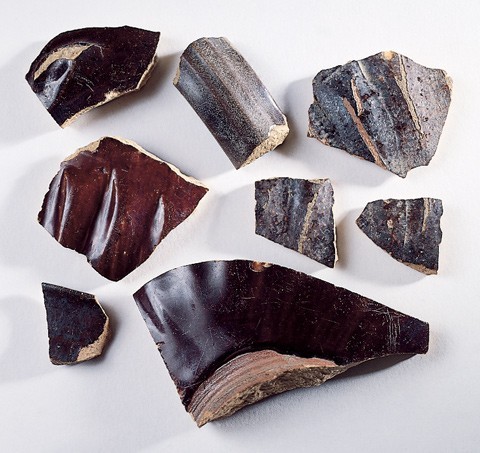
Teapot fragments, Henry Piercy, Alexandria, ca. 1796. Lead-glazed earthenware. These sherds were found at Piercy’s property at 127 S. Fairfax Street. Some have a poorly fired glaze and display marks from contact with kiln furniture or other pots.
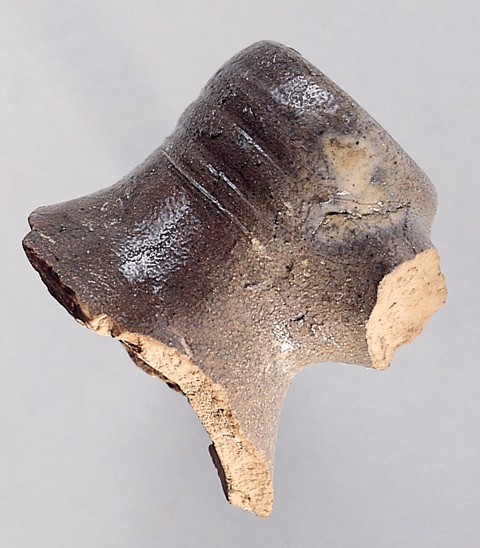
Bottle and jar fragments, probably Lewis Plum, Alexandria, ca. 1799–1809. Salt-glazed stoneware with iron-oxide wash. These wasters were found at the Piercy kiln site.
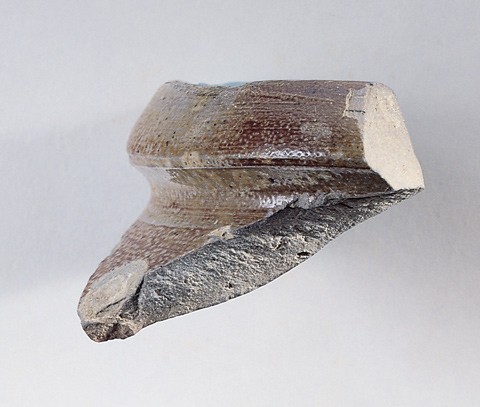
Bottle and jar fragments, probably Lewis Plum, Alexandria, ca. 1799–1809. Salt-glazed stoneware with iron-oxide wash. These wasters were found at the Piercy kiln site.
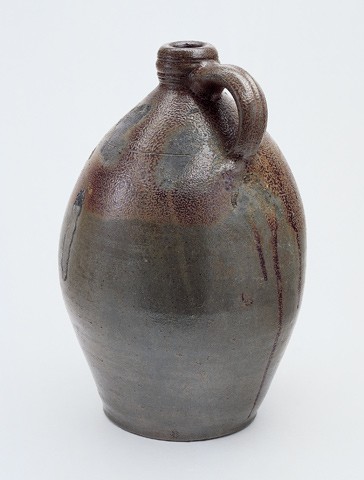
Jug, John Swann, Alexandria, ca. 1813–1820. Salt-glazed stoneware with iron-oxide wash. H. 12". This example is from a domestic site, but many similar wares were found at Swann’s pottery on Wilkes Street. The reeded neck and iron wash are also found on bottle, jug, and jar wasters from the Piercy Pottery. These vessels are attributed to Lewis Plum who rented the pottery in 1799 and with whom Swann apprenticed.
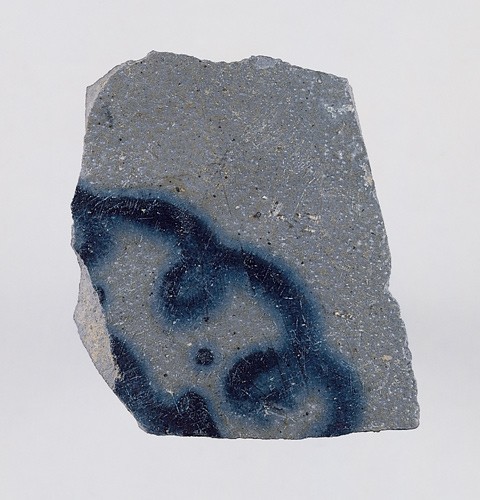
Stoneware fragment, probably Lewis Plum, Alexandria, ca. 1799–1809, from the Piercy kiln site. Salt-glazed stoneware with slip-trailed cobalt.
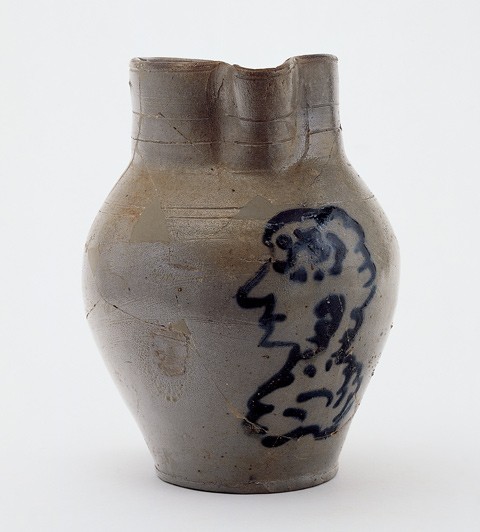
Pitcher, possibly Alexandria, ca. 1799–1820. Salt-glazed stoneware with slip-trailed cobalt. H. 8 1/2". This pitcher from a privy on Market Square has decoration similar to the fragment from the Piercy kiln site illustrated in fig. 50.

Excavations at the Piercy waster dump (44AX87), 1999. (Photo, Bernard K. Means, Alexandria Archaeology.)
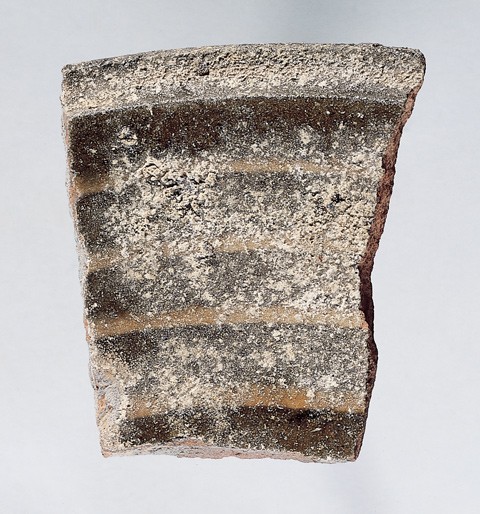
Pan, Henry Piercy, Alexandria, ca. 1792–1809. Slipware. Many wasters from the Piercy Pottery were overfired and discolored, or have a bubbled or pitted glaze. Some, like this slipware pan fragment, are severely burned.

Pan, Henry Piercy, Alexandria, ca. 1792–1809. Slipware. D. 13". This vessel from the Piercy waster pile shows his well-executed, tightly spaced spiraling slip.
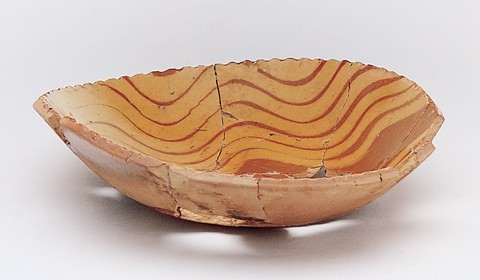
Dish, Henry Piercy, Alexandria, ca. 1792–1809. Slipware. D. 7 1/2". This vessel is from the Piercy waster pile.
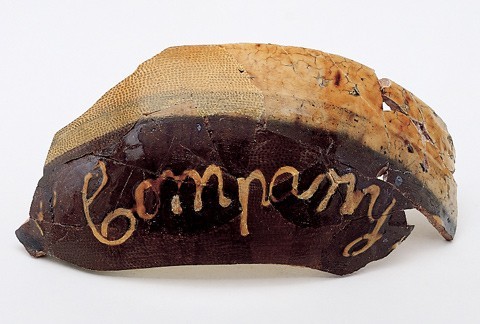
Punch bowl, Henry Piercy, Alexandria, ca. 1792–1799. Slipware. D. 10". The incomplete inscription includes the partial date “17—” and the word “Com(p)any.” This vessel from the Piercy waster pile is the only dated piece of Alexandria earthenware. The stippled surface denotes areas of restoration.
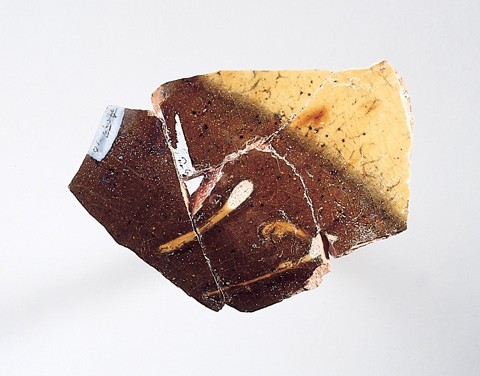
Punch bowl, Henry Piercy, Alexandria, ca. 1792–1799. Slipware. D. 10". The incomplete inscription includes the partial date “17—” and the word “Com(p)any.” This vessel from the Piercy waster pile is the only dated piece of Alexandria earthenware. The stippled surface denotes areas of restoration.

Reconstruction of the Piercy punch bowl illustrated in fig. 56. (Illustration, Andrew Flora.)
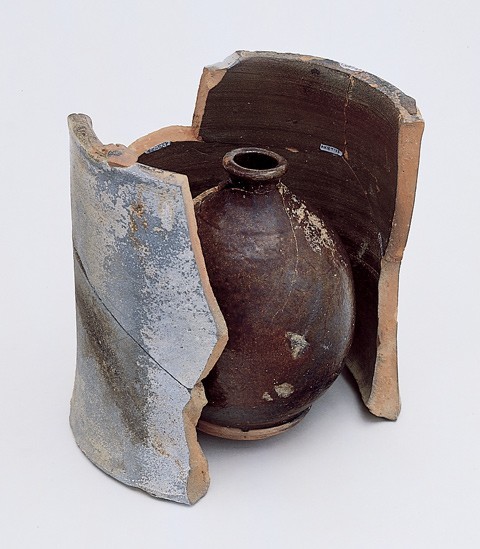
Sagger with syrup jar, Henry Piercy, Alexandria, ca. 1792–1809. H. 8 1/2". The glazed wares were placed in saggers for protection in firing.
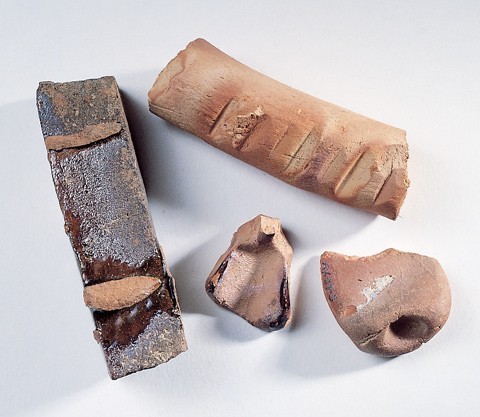
Kiln furniture, Henry Piercy, Alexandria, ca. 1792–1809. Fire bars and wedges were used to separate large pots with heavy rims and to steady the stacks of pottery in the kiln. Small wads of clay were pinched between the potter’s fingers and used to support the pots as they were stacked in the kiln.
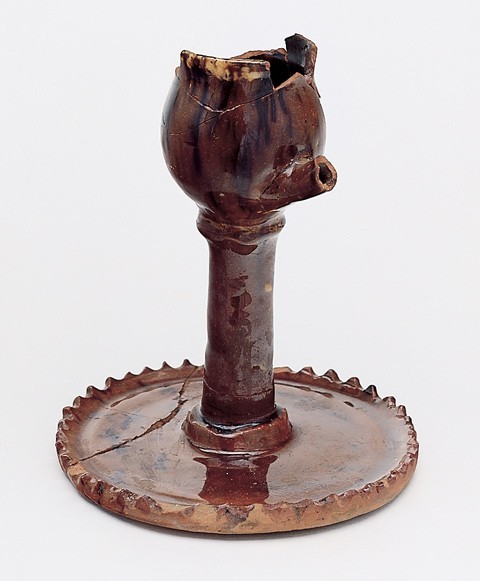
Oil lamp, Henry Piercy, Alexandria, ca. 1792–1809. Lead-glazed earthenware. H. 7 1/2". This lamp is from the Piercy shop. Fragments from a similar vessel were found at the kiln site.

Jar, lid, and vase, Henry Piercy, Alexandria, ca. 1792–1809. Lead-glazed earthenware. H. 5 1/2", H. 2 1/2", Base D. 3 1/4". These atypical vessels with swirls of slip are from the Piercy shop site.

Pan, dish, and dish fragments, possibly Alexandria, ca. 1792–1809. Slipware. D. 11 1/2", 10", and 6 1/2" (extrapolated). A pan from the Piercy shop and a small dish from nearby McKnight’s Tavern have atypical yellow on brown decoration. These pieces were thought to be imported, but similar sherds were found at the Piercy waster dump.
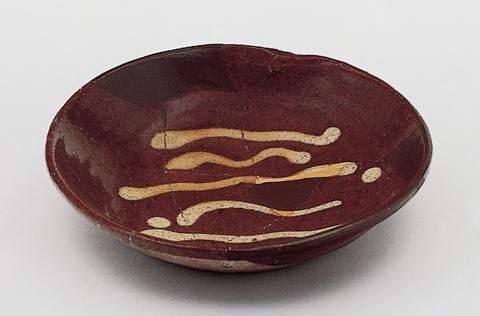
Pan, dish, and dish fragments, possibly Alexandria, ca. 1792–1809. Slipware. D. 11 1/2", 10", and 6 1/2" (extrapolated). A pan from the Piercy shop and a small dish from nearby McKnight’s Tavern have atypical yellow on brown decoration. These pieces were thought to be imported, but similar sherds were found at the Piercy waster dump.
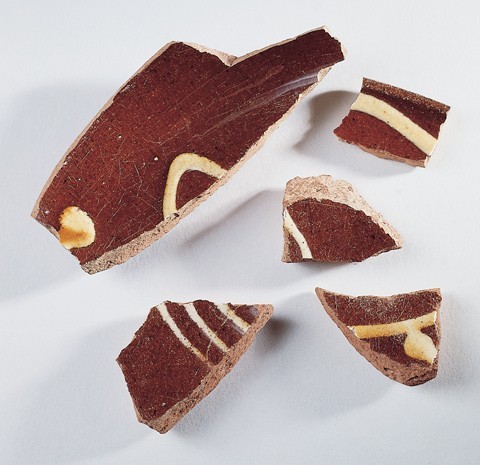
Pan, dish, and dish fragments, possibly Alexandria, ca. 1792–1809. Slipware. D. 11 1/2", 10", and 6 1/2" (extrapolated). A pan from the Piercy shop and a small dish from nearby McKnight’s Tavern have atypical yellow on brown decoration. These pieces were thought to be imported, but similar sherds were found at the Piercy waster dump.
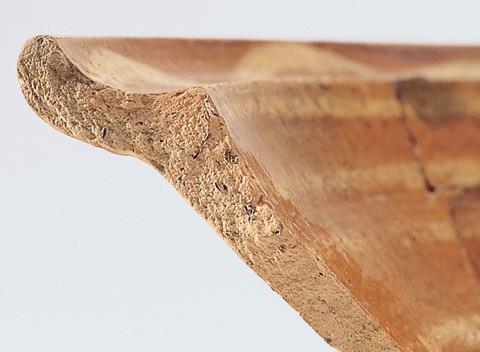
Detail of a pan, Philadelphia, ca. 1770s. Slipware. D. 10 1/2". (Courtesy, National Park Service, Independence National Historical Park, Inde-60179.)
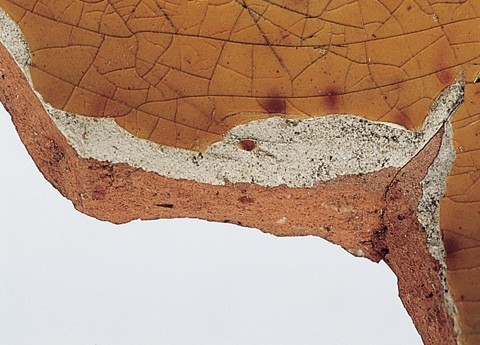
Detail of a bowl, Philadelphia, ca. 1770s. Slipware. (Courtesy, National Park Service, Independence National Historical Park, Inde-60183.)

Dish fragments, Henry Piercy, Alexandria, ca. 1792–1809. Slipware. The appearance is similar to that of Philadelphia wares.

Dr. Romeo Segnan explains Mössbauer spectroscopy in his physics laboratory at American University. (Photo, Bernard K. Means, Alexandria Archaeology.)
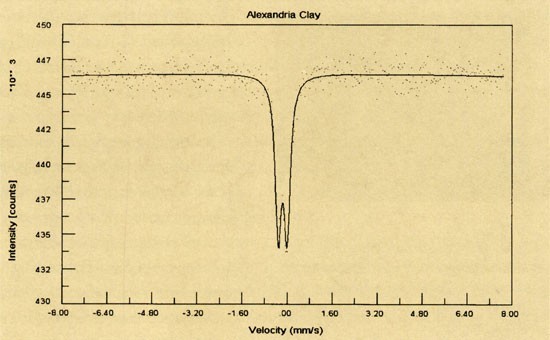
The central peak for the Alexandria clay spectrum shows larger splitting than the corresponding peak in the Philadelphia clay spectrum. (Courtesy, Drs. Romeo Segnan and J. P. Auffret, Department of Physics, American University.)
